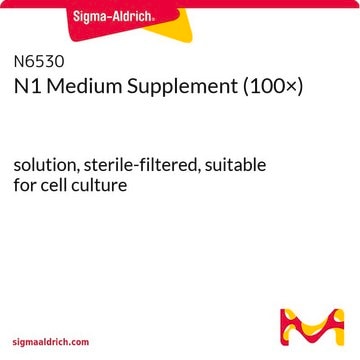T8691
Taurine
suitable for cell culture, BioXtra, meets USP testing specifications
Synonym(s):
2-Aminoethanesulfonic acid
About This Item
Recommended Products
product name
Taurine, suitable for cell culture, meets USP testing specifications
Agency
meets USP testing specifications
product line
BioXtra
form
crystalline powder
technique(s)
cell culture | mammalian: suitable
impurities
endotoxin, tested
color
white
mp
>300 °C (lit.)
SMILES string
NCCS(O)(=O)=O
InChI
1S/C2H7NO3S/c3-1-2-7(4,5)6/h1-3H2,(H,4,5,6)
InChI key
XOAAWQZATWQOTB-UHFFFAOYSA-N
Gene Information
rat ... Ppm1a(24666)
Looking for similar products? Visit Product Comparison Guide
Application
- as a component of cardiomyocyte dissociation solution
- as a supplement for modified synthetic oviduct fluid (m-SOF) medium to culture the presumptive zygotes
- as a constituent of low Ca2+ solution employed in preparation of collagenase B solution for colony dissociation into single cells
- to assess its effect on development of bovine embryos fertilized with different bull semen during in vitro fertilization
- as a component of culture media for derivation of cornea organoids
Biochem/physiol Actions
Storage Class Code
11 - Combustible Solids
WGK
WGK 2
Flash Point(F)
Not applicable
Flash Point(C)
Not applicable
Personal Protective Equipment
Regulatory Listings
Regulatory Listings are mainly provided for chemical products. Only limited information can be provided here for non-chemical products. No entry means none of the components are listed. It is the user’s obligation to ensure the safe and legal use of the product.
JAN Code
T8691-25KG:
T8691-25G:
T8691-100G:
T8691-VAR:
2520011:
2550034:
2520010:
T8691-BULK:
T8691-1KG:
Certificates of Analysis (COA)
Search for Certificates of Analysis (COA) by entering the products Lot/Batch Number. Lot and Batch Numbers can be found on a product’s label following the words ‘Lot’ or ‘Batch’.
Already Own This Product?
Find documentation for the products that you have recently purchased in the Document Library.
Customers Also Viewed
Articles
Ultrapure water from Milli-Q® system shown free of BPA, suitable for embryology research, minimizing endocrine disruptor interference.
Our team of scientists has experience in all areas of research including Life Science, Material Science, Chemical Synthesis, Chromatography, Analytical and many others.
Contact Technical Service








